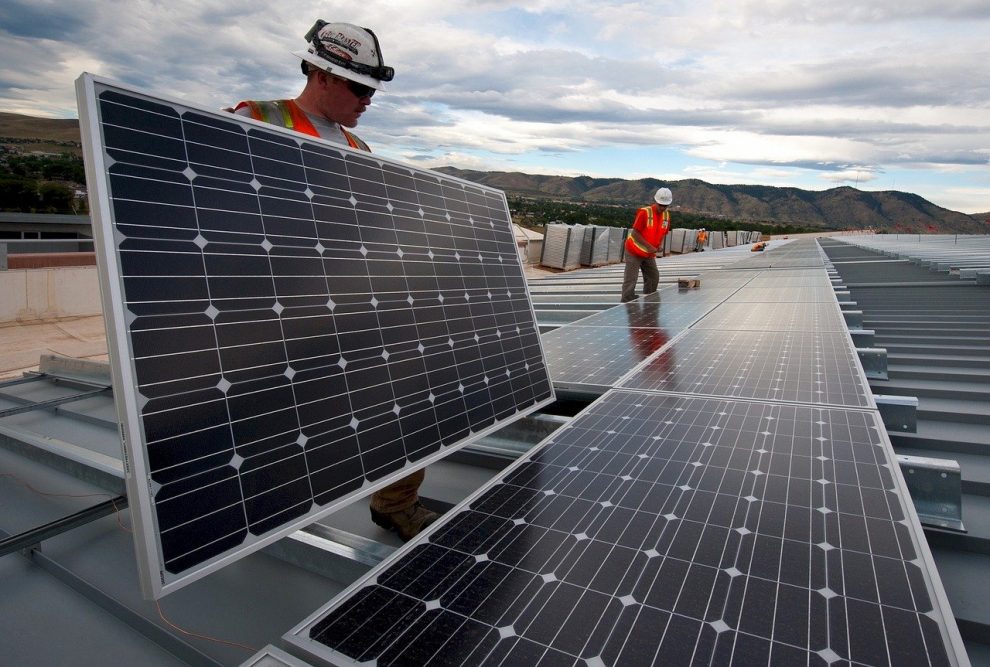This study will help India in its pursuit of expanding clean energy capacity within its territory
India announced an ambitious plan to achieve 175 GW (225 GW including small hydro) renewable energy capacity in its energy mix by the year 2022. The country also recently announced another milestone of 450 GW to be reached by 2030.
With all these grand plans underway, what about execution of these projects to actually achieve the set targets in real time?
Germany has come forth to help the Asian subcontinent with this massive endeavor. Deutsche Gesellschaftfür Internationale Zusammenarbeit (GIZ) has joined forces with DNV GL, which is the world’s largest source of independent energy experts and a certification body to boot. Together, these two entities are slated to carry out a major control reserve study in South India. It is the first ever control reserve study to be conducted in India. The purpose of the study is to determine what is needed to balance energy supply from wind and solar energy sources keeping in line with renewable energy plans of the south states by 2022.
This is a subset of the Indo-German Energy Program (IGEN), which is a combined initiative of the German Ministry of Economic Cooperation and Development (BMZ) and the Ministry of New and Renewable Energy (MNRE) implemented by GIZ India. This study will help India in its pursuit of expanding clean energy capacity within its territory.
“India is a regional and global industrial powerhouse, consuming more than 6600 TWh of energy every year. Hence, its plan to grow renewable energy is both bold and promising. Because of these factors, this study proves to be a key step towards ensuring the quality of the energy supply within this plan,” said Markus Wypior of GIZ.
The study was conducted for the Southern Regional Power Committee (SRPC) which is a government entity. The study covered all southern states in India.
To conduct this research, DNV GL used its Renewable Energy Integration Study and Control Reserve Dimensioning Services to calculate secondary and tertiary control reserve needs. These control reserve needs will help in proper distribution of power between the states under consideration. Dimensioning of the control reserves within these states will make sure that quality and affordable integration of big renewable energy resources occurs. DNV GL will give suggestions to SRPC to identify control reserve needs as per the final results of the study.
Of the 175 GW of clean energy capacity that India is slated to install by the year 2022, 100 GW is ear marked for solar under the Jawaharlal Nehru National Solar Mission (JNNSM). Also, 60 GW has been allocated for wind energy capacity addition by the same deadline. In January 2020, India’s energy generation from clean energy sources stood at 10.325 BU (billion units). As of March 31, 2020, installed grid-connected solar energy capacity stood at 34.63 GW and grid-interactive wind energy capacity stood at 37.69 GW. Energy from biomass projects stood at 9 GW and waste-to-energy projects was at 147 MW. At the end of fiscal 2020, the total installed grid-connected renewable energy capacity stood at 87 GW, which is a far cry from the 175 GW target scheduled for 2022. The target seemed attainable under ideal circumstances, i.e., no disruption due to any crisis whatsoever. However, COVID has derailed the entire world economy, and the Indian economy is no exception to this. Most renewable energy projects that are in the pipeline have been stalled due to COVID restrictions. Also, cash flow might be arrested or affected to say the least. Will India achieve its renewable energy targets by the slated dates and fast-track its energy transition? Only time will tell.














Add Comment